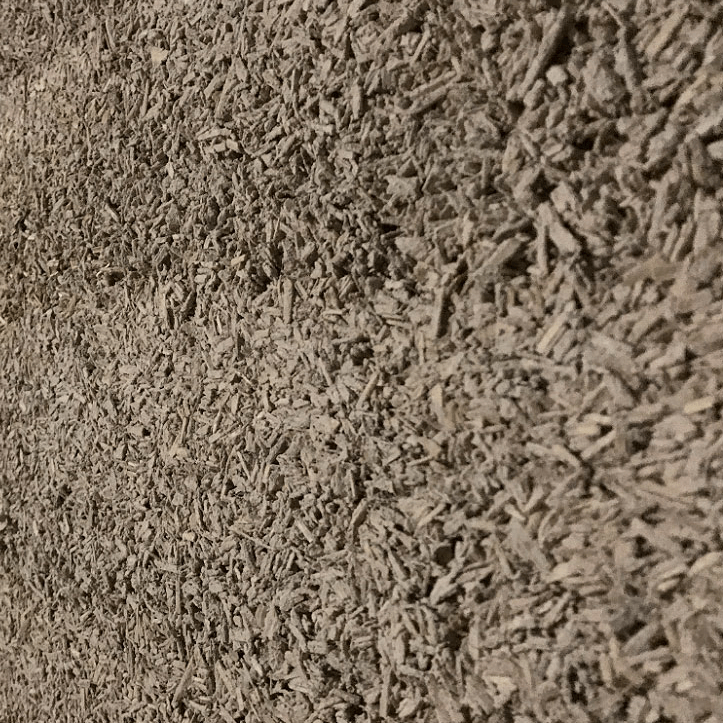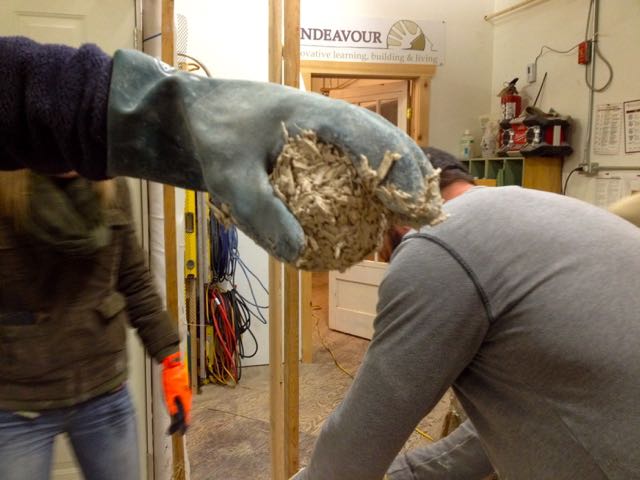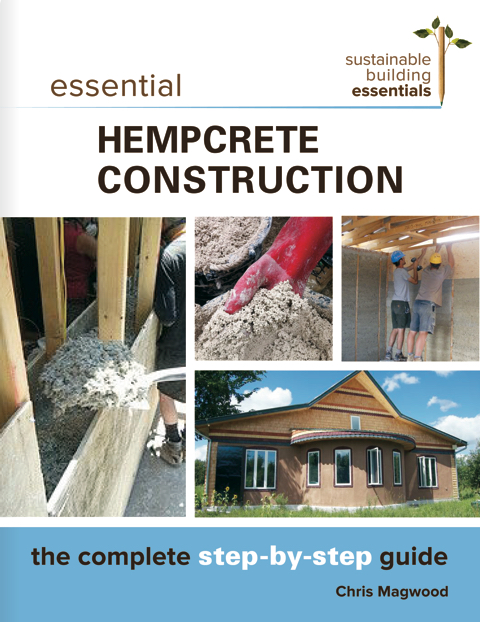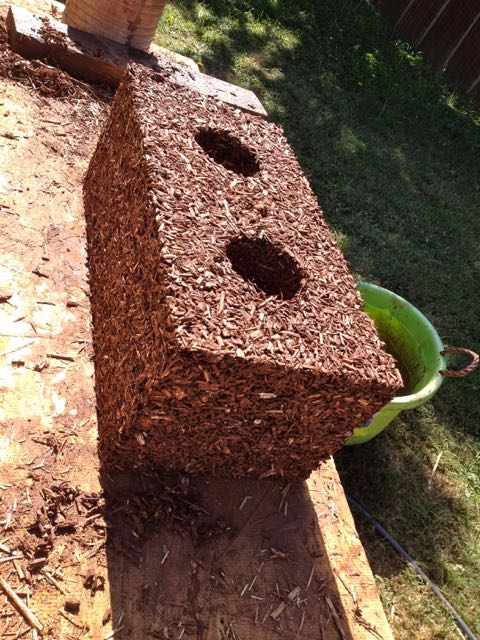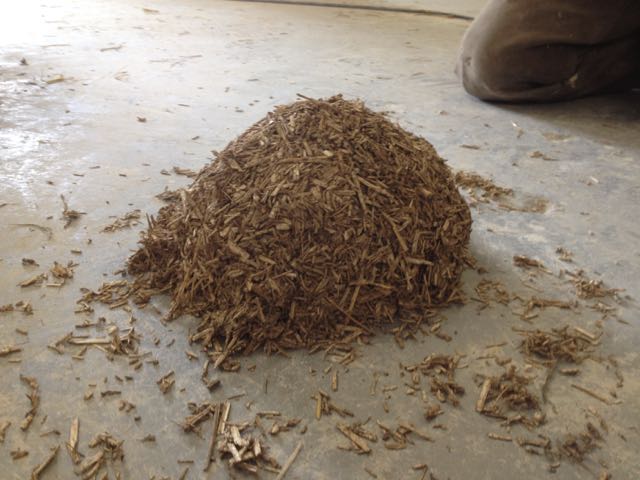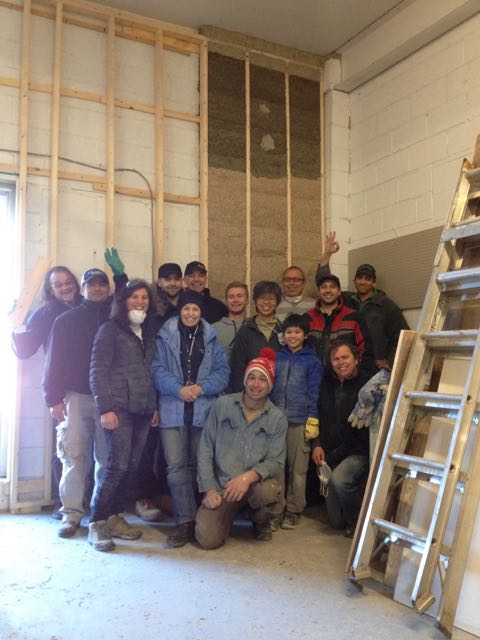On April 9, a workshop at Endeavour brought participants together to explore hempcrete insulation materials.
The workshop looked at well-used options for these materials, but also explored some interesting new approaches.
Endeavour has continued to develop the use of homemade hydraulic lime binders as a means to eliminate carbon-heavy cement from our building materials and to create locally-sourced binders for cement replacement. At this point, our homemade hydraulic lime binder is well-tested and we feel it works as well as any of the imported (European) hempcrete binders, at a fraction of the cost and with locally-sourced ingredients.
Hempcrete mix
Our hempcrete binder is composed of 50% hydrated lime (most easily accessible to us is Graymont’s Ivory Finish Lime) and 50% Metapor metakaolin from Poraver (created as a by-product of the factoring company‘s expanded glass bead production).
We mix our hempcrete at a ratio of 1 part chopped hemp hurd by weight, with 1.5 parts of the binder by weight. After translating these weights to volume measurements, it was 4 buckets or hemp hurd going into the mixer with 1 bucket of binder (1/2 lime, 1/2 metakaolin).
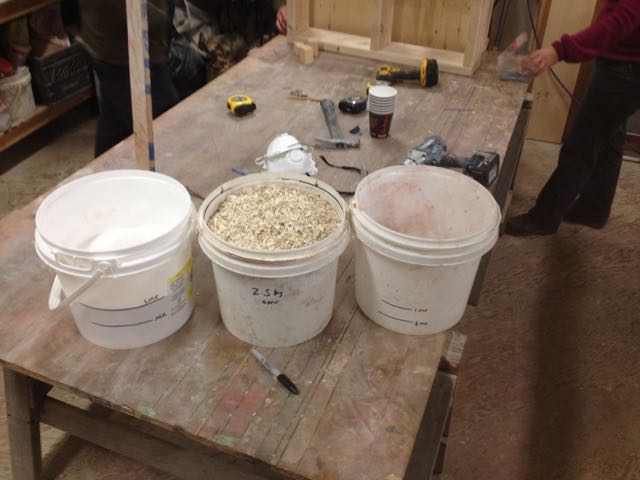
Weight ratios are converted to bucket measurements: 1/2 bucket of lime, 1/2 bucket of metakaolin, 4 buckets of hemp hurd
The hemp hurd goes into the mortar mixer first and then we sprinkle in the binder and allow it dry mix until the hurd is well coated with binder powder.
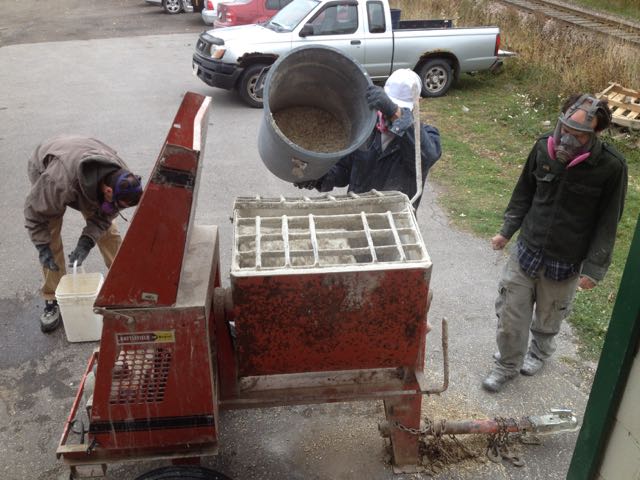
A horizontal shaft mortar mixer is used to dry-mix the lime binder and the hemp before water is misted into the mix
Water is then misted (not sprayed) into the mixer until the mix is just moist enough that if we pack it like a snowball in our gloved hands it keeps its shape, but is still fairly fragile (ie, can be broken with a bit of a squeeze). It is important to not over-wet the hempcrete, as this will greatly extend the drying time once the hempcrete has been packed into a wall. If too much water is added, the mix can’t be recovered by adding more dry ingredients as the hemp hurd will quickly absorb excess water and there won’t be any free water for the new dry ingredients. So, add water carefully and gradually!
Hempcrete is placed into formwork on a frame wall, using light hand-pressure to compact the mix just enough to ensure that the binder will stick all the individual pieces of hemp together.
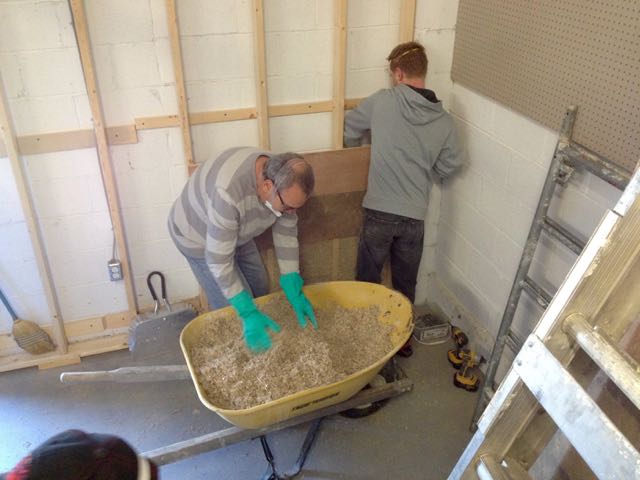
Hempcrete is placed into forms and lightly pressed into place. The forms are leap-frogged up the wall.
Our workshop crew was able to mix and place enough hempcrete to fill a 4-1/4 inch deep wall cavity that was 4-feet wide and 13-feet high in just under 3 hours! That’s over 6 cubic feet of material per hour!
Hempcrete recycling
We have long touted the no-waste benefits of hempcrete. We’ve speculated that even when the insulation is being removed from a building during renovations or demolition, that the hempcrete can be broken up and recycled into a new mix with new binder added. We put that theory to the test, as we demolished one of our small sample walls and added the broken up hempcrete into our new mixes at a ratio of 3 parts new hemp to 1 part recycled hempcrete. The resulting mixes were impossible to distinguish from the all-new mixes, and confirmed that hempcrete can easily be re-used!
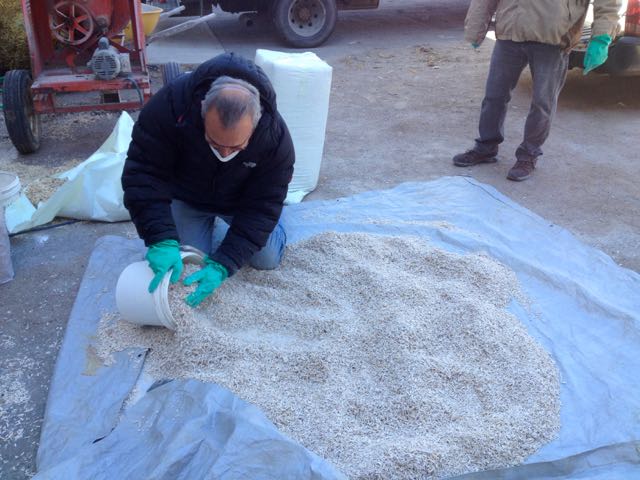
Hempcrete that had already been mixed into a wall was broken up and added into a new mix… Fully recyclable!
Hempcrete book forthcoming
If you are interested in hempcrete insulation, Endeavour’s Chris Magwood has just finished a book called Essential Hempcrete Construction that will be available in June, 2016. It contains recipes, sourcing, costing, design and installation instructions and will be very valuable to anybody considering a hempcrete project.
Hemp-clay shows lots of promise!
Hempcrete insulation is almost always done using a lime-based binder. But at the Natural Building Colloquium in Kingston, New Mexico last October, we were doing a hempcrete demonstration right next to a straw/clay demonstration, and we took the opportunity to mix up a block of hemp hurds with a clay binder.
The success of that demo block led us to try this combination on a slightly larger scale, and we machine mixed the clay and the hemp to fill one tall wall cavity with this hybrid material. Using the same mixing methodology as typical hempcrete, we added the hemp hurd and dry bagged clay to the mixer and allowed it to dry mix, before misting with water. Interestingly, we were able to use half the amount of clay binder compared to lime binder (1/2 bucket of clay to 4 buckets of hemp hurd) and the resulting mix was stickier and easy to form and pack than with the lime, and with the addition of noticeably less water.
The key difference between the two binders is in their manner of setting. Hydraulic lime binders cure chemically, and consume water to change the chemical structure of the mix as it solidifies. Clay binders simply dry out and get hard. So the lime-based versions should be drier and harder sooner. However, the smaller quantity of water required in the clay-hemp mix may mean that drying times end up being similar… we’ll report back when we know.
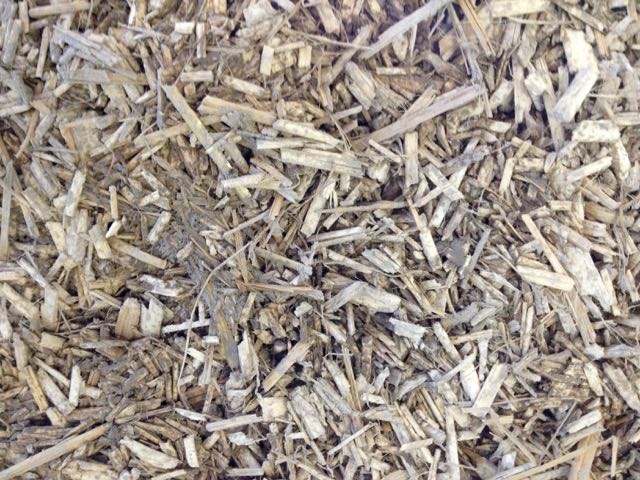
A close-up of the hemp-clay mix formed into the wall. It keeps its shape within seconds of being placed into the forms
Clay binder with hempcrete offers some advantages over lime-based options, including a significantly lower carbon footprint and none of the caustic nature of lime that can cause skin burns when handling. The clay-based binder creates a mix that is much stickier during installation, which means less packing/tamping to get the material to cohere in the forms. Less water means that it was almost impossible to over-compact the mixture. We will definitely be exploring this option in a serious way!
